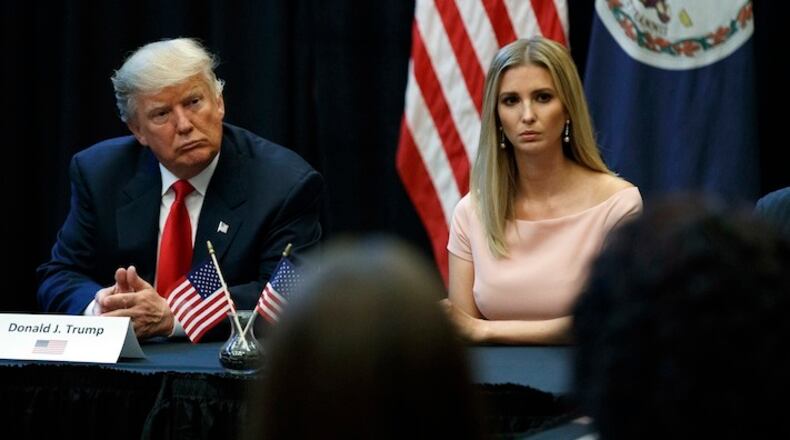Donald Trump is proposing an Army as big as the one President George W. Bush sent into Iraq and Afghanistan and a Navy with dozens more ships than the service is aiming for.
The Republican presidential nominee detailed his plans for the military for the first time in a speech Wednesday in Philadelphia. While he pledged to remove the budget caps that now constrain Pentagon spending, he offered no price tag for what he has called a plan "to rebuild our very depleted military" and no road map to pay for it.
"We currently have the smallest army since 1940," Trump said, and "the average Air Force aircraft is 27 years old. We have second-generation B-52 bombers. Their fathers flew the same plane as they're flying right now. This is not the United States."
Here are the main elements proposed by Trump in his speech and in a summary from his campaign, compared with current Pentagon policy:
Army: Trump pledged an active-duty Army of about 540,000. That's up from about 475,000 today.
The service approached 540,000 troops from 2009 to 2011, after Bush increased the force to sustain the American surge in Iraq along with the continuing war in Afghanistan. The number has steadily dropped since the U.S. pull-out from Iraq in December 2011. The debate since then has been about the pace of a planned draw-down to 450,000 by the end of fiscal 2018.
Restoring troops to the 540,000-level instead of continuing the planned drawdown could cost as much as $30 billion over current plans, said Mark Cancian, a defense analyst for the Center For Strategic and International Studies and former Office of Management and Budget force structure expert.
A proposal in the House-passed defense policy bill for the fiscal year that begins Oct. 1, H.R. 4909, calls for retaining a force of 480,000 Army troops instead of a reduction to 460,000 next year. That alone would cost about $19 billion through 2021. The matter remains unresolved because the Senate-passed version, S. 2943, accepts the reduction to 460,000 troops next year.
Air Force: Trump's campaign said he will "build an Air Force of at least 1,200 aircraft, which the Heritage Foundation notes is the minimum needed to deal with major contingencies."
He didn't elaborate on his calculation, but the service already has 1,312 active-duty combat aircraft at bases, in depots or being used for training, according to the Air Force Association's annual almanac. The service has 2,034 combat aircraft when the air National Guard and reserves are included.
Navy: Trump's campaign said he "will build a Navy approaching 350 surface ships and submarines." That's more than the Navy's goal of restoring the fleet to 308 vessels.
In an era of advanced technology, officials led by current defense secretary Ash Carter have argued that advanced capabilities count more than sheer numbers of ships.
"For the last several years, the Department of the Navy has overemphasized resources used to incrementally increase total ship numbers at the expense of critically needed investments in areas where our adversaries are not standing still, such as strike, ship survivability, electronic warfare and other capabilities," Carter wrote last December in a memo that was rare in its blunt rejection of a military service's approach.
The size of the naval fleet has long been a political debating point. In the 2012 presidential race, Republican nominee Mitt Romney called for a larger Navy — his advisers said he, too, wanted 350 vessels — and criticized President Barack Obama for letting the number of ships shrink to "levels not seen since 1916."
"We also have fewer horses and bayonets" than in 1916, Obama responded. Now, he said, "we have these things called aircraft carriers, and planes land on them."
About the Author
Keep Reading
The Latest
Featured



